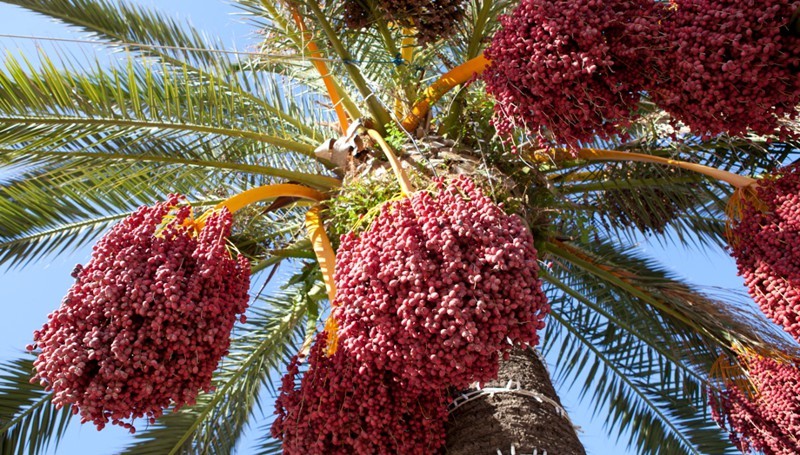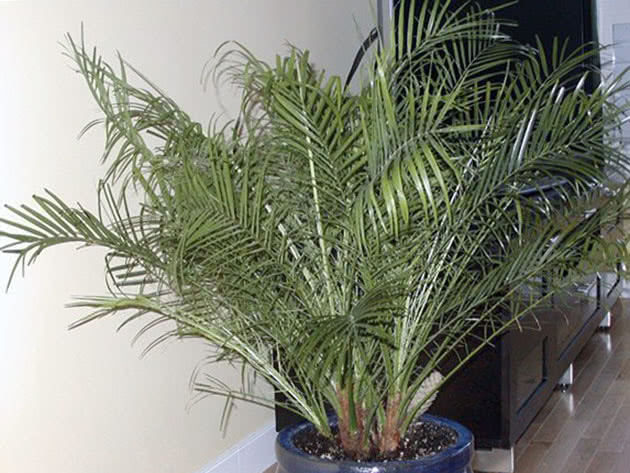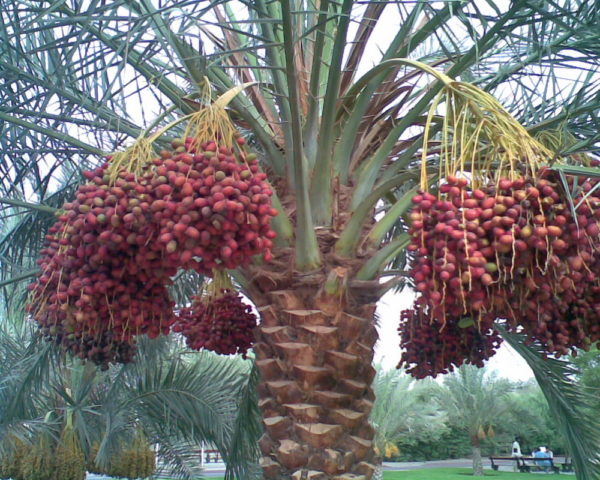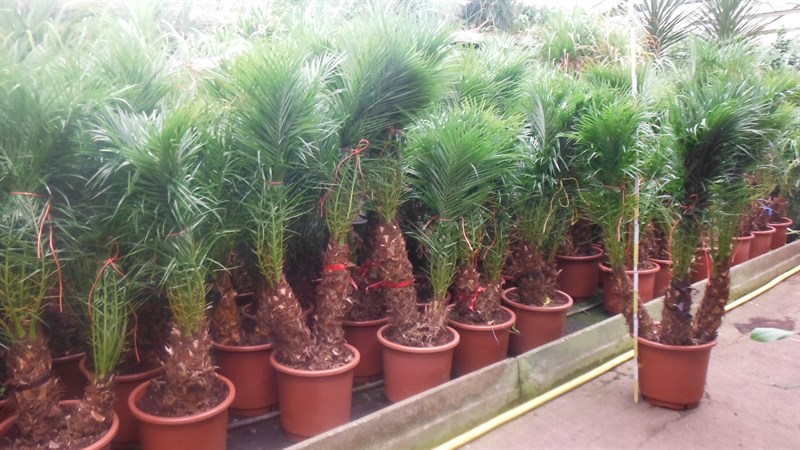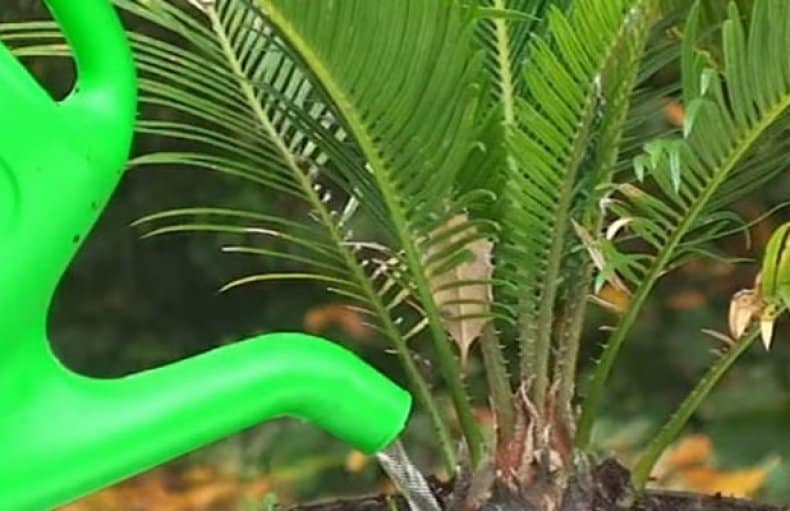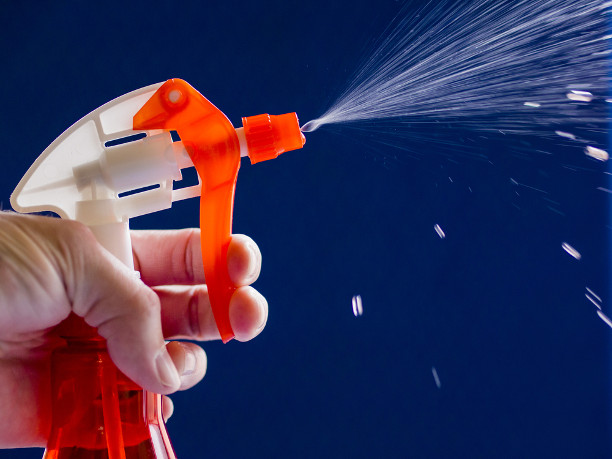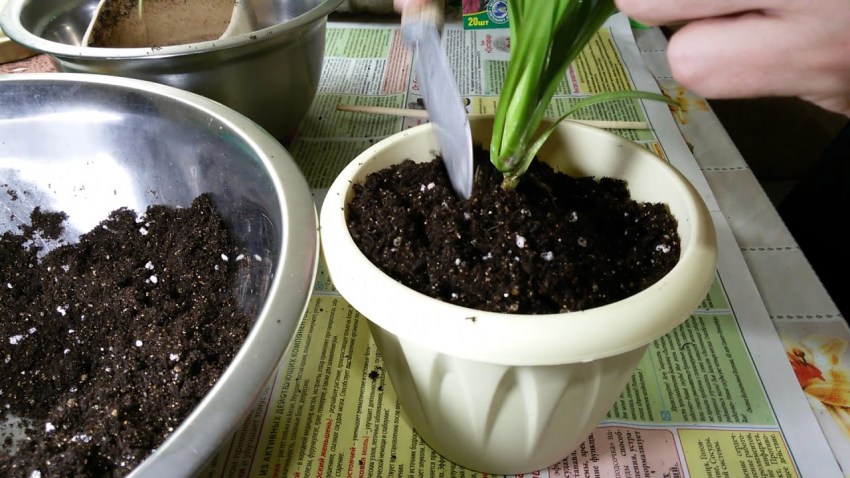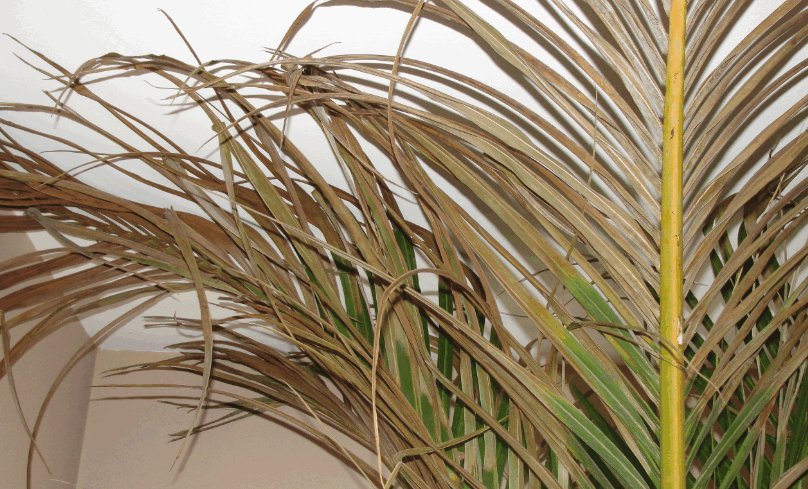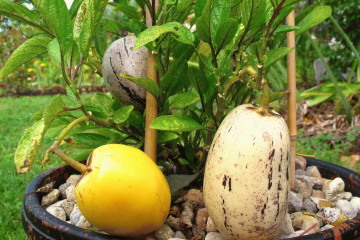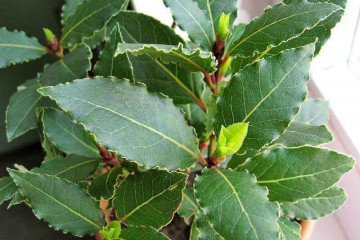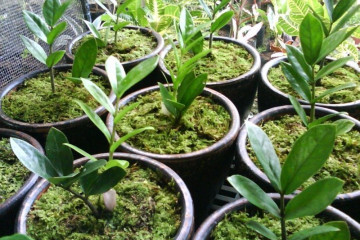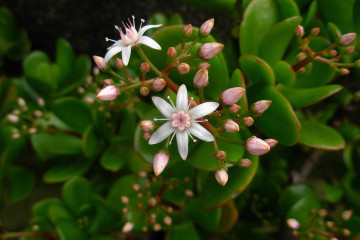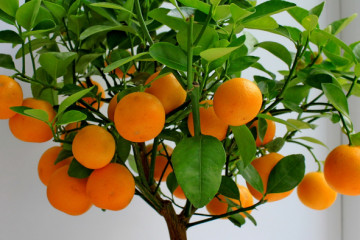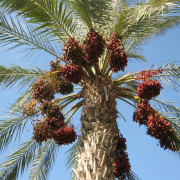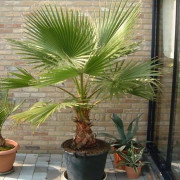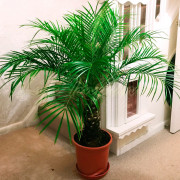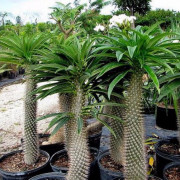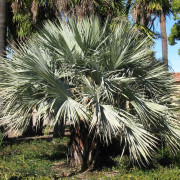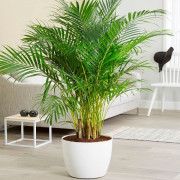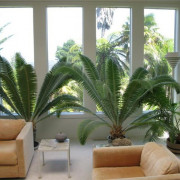Date fruits - a fruit-bearing tree at home
Content:
The date palm is a perennial tree that grows delicious sweet fruits - dates. The plant is distributed mainly in the countries of Asia and Africa. In European countries, as a rule, ornamental plant species are grown. The Phoenix date palm is well known for its seed-grown ability and ease of maintenance.
Date tree history
Archaeologists have established that dates were grown in Egypt in the Neolithic era, and on the shores of the Indian Ocean at the beginning of the Bronze Age. There is evidence that date trees were grown on the lands of modern Iran as early as the 6th century BC.
According to legends, the date palm was considered the tree of life, which symbolized immortality and restoration. In the countries of the Middle East, the date palm was revered as a "tree from space". Ancient people believed that dates are a tree, the fruits of which can be called food for the gods and the first people on earth.
The date palm was considered a symbol of wealth and a good harvest. Ancient people believed that the dried fruits of the date palm have a healing effect on the entire body. This tree was worshiped and described in verse, and also many artists depicted it in their canvases. Martiros Sarian "Date Palm" is a famous work that was written by the artist in 1911.
In European countries, date trees are grown very recently and mainly as a houseplant.
general description
The date palm (Latin - Phoenix dactylifera) belongs to the Palm family (Arecaceae). The average tree height is 12-32 meters. The growth rate of a young plant is about 50 cm per year. At the age of 15, the palm tree reaches 7 meters in height. As a rule, the trunk of palms is shaggy, from the bases of fallen leaves.
The top of the date palm is decorated with a rosette of 15 feathery leaves, which reach five meters in length. Long paniculate inflorescences form in the leaf axils. During the ripening of the fruit, the inflorescences bend under their weight.
Fruits - dates, are oblong or oval in shape, reach 2-7 cm in length and 3.5 cm in diameter. The date is a completely edible fruit, when ripe it can be yellow-brown or red-chestnut in color.
Has a sweet nutritious pulp, which hides a hard bone with a longitudinal groove on the side. For full maturation, a stable air temperature of about 35-40 degrees is required.
The fruits of the date tree are consumed in fresh, dried, dried and candied forms. Fresh fruits are not stored for long, therefore, they are presented in the form of dried fruit on store shelves. Pitted dates, what is it - the fruit of a date palm, from which the stone was removed before drying.
The taste of the date is very sweet, sometimes even too much, depending on which variety.How much sugar is in dried dates with stone - dried date palm fruits contain 60-65% sugar (mainly fructose and glucose, which does not have a negative effect on the body), this is much more than in other fruits.
Distribution area
The date palm grows in areas with a hot climate and can only withstand a short-term cold snap. The tree is distributed in Europe, Asia, India, Africa, the city of Luxor, South America and Australia. Canarian dates and Robelena prefer to grow on coastal areas, rocks and rocks. The date palm grows in oases located in the Libyan and Nubian deserts.
Phoenix date palm species
More than 17 species of date trees are known, which are grown as a houseplant and fruit tree. The most common types of date palm include:
- Canary (canariensis);
- Finger;
- Robelini (roebelenii).
Canary
Canary date - in its natural habitat, the columnar trunk of a tree grows up to 15 meters in height, up to 1 meter in width. In indoor conditions, the plant is much smaller. The Canary date palm has rather large, separate malachite-colored leaves.
Blossoming of the tree occurs only in nature; in conditions of home keeping, the plant does not bloom. Canary date in home care requires careful adherence to the watering regime and the provision of good lighting.
Fingered
Finger dates - in nature, the trunk of a tree reaches 30 meters in height and 30 centimeters in circumference. On the trunk of the tree there are numerous remains of dried leaf stalks. The leaves are separate, rather long (up to six meters), arranged in a bundle, like a bouquet at the very top.
Robelini
The Robelini date is a multi-stemmed or single-stemmed squat tree that grows up to 1-3 meters in height. The trunk is about 10 cm in circumference. The leaves are feathery, of medium length (up to 1-2 meters), their color is dark green.
Due to its small size and slow growth, this species is very easy to grow at home.
Home care
The rules for caring for a date palm are the same as for other types of palms.
Lighting
The date tree loves good lighting, but it will feel great in partial shade. The plant pot can be placed on the windowsill of the west or east window. In order for the crown to develop uniformly on the palm, the plant needs open light, and it should also be regularly turned in different directions to the light source.
In summer, when the nights are warm and the temperature does not drop below +12 degrees, the palm tree can be kept outside in the garden, under the shade of other trees. If this is not possible, then it is worth taking the plant out to a loggia or balcony, but provide it with protection from direct sunlight.
Watering
When kept at home, the plant must be provided with regular watering. Do not allow the earthen coma to dry out in the pot. As soon as the top layer (2-3 cm) of the soil has become dry, it is necessary to water it. During the period of active growth (from the beginning of April - August), the palm tree needs the greatest amount of watering.
During extreme heat, the plant is watered every two days and the leaves are sprayed with a spray bottle once a day. During the dormant period (September - end of March), the plant should be watered less often (no more than 1 time per week) and not so abundantly.
To maintain soil moisture, you can put a pot with a plant on a pallet with wet expanded clay or moss. When watering a palm tree, do not pour too much water, otherwise, due to the high moisture content of the soil, the roots may rot and the plant will die. It is very important that the pot has good drainage.
Temperature and humidity
In the spring and summer months, when an active vegetation process takes place, + 20-25 ° C is considered the ideal temperature for keeping a tree. During the dormant period (autumn, winter), the optimal air temperature for a plant is considered to be + 15-18 ° C, but there are types of date palms that winter well at + 8-10 ° C.
When maintaining a date tree, it should be borne in mind that it reacts poorly to a draft. Leaves may darken or fall off altogether. Also, the plant has a very sensitive root system, so the pot with a palm tree should not be placed on a cold marble floor or windowsill.
The tree is very fond of high humidity, and the higher it is, the better (about 70-85%). It is recommended to install air humidifiers in the room where the plant stands, and also to regularly spray the leaves with warm filtered water.
Once every two weeks, wipe the palm leaves with a soft, damp sponge. Once every 7 days, it is worth moisturizing the plant from the shower, while the water should be warm and soft.
Top dressing
During the active growing season, the date palm is fertilized every 14 days. During the dormant period, fertilizers are applied every 30 days. They are used in liquid form. The best are complex fertilizing for decorative growing deciduous plants and special mineral and organic complexes for palms.
The plant is fed both root and foliar, spraying the leaves of the plant with fertilizer. For a good growth of green mass of leaves, a palm tree needs a large amount of nitrogen.
Transfer
Despite the fact that the date palm does not really like transplanting, it still needs to be transplanted. Young plants, aged 1-5 years, require an annual transplant. Palm trees over 5 years old need to be transplanted every 2-3 years.
The transplant is carried out by the method of transshipment with an old earthen clod. First, a drainage layer of expanded clay is laid on the bottom of a new pot, then a palm tree is placed along with the old soil and sprinkled with the required amount of new soil mixture.
When transplanting, it should be borne in mind that the pot for the plant must be selected very high, since the roots of the palm are quite long. For transplanting a date palm, as a rule, they use this type of soil: turf, leafy earth and sand. All components are taken in equal proportions.
Problems with growing palm trees
If you do not follow the necessary care rules, water a lot or a little, then soon the plant may get sick, and pests may even appear on it.
Insects and pests
The most common pests that attack the domestic date palm are:
- Red spider mite. This insect, as a rule, starts up with improper watering and non-observance of the temperature regime in the room. First, the tick affects the stems and then the leaves of the palm tree;
- Shield. Such insects look like brown dots. They infect the surface of the leaves, sucking out all the juice from them. As a result, the leaves on the palm tree begin to turn yellow, dry out and fall off;
- Spider mites are common. This insect can appear due to too dry indoor air. When a palm tree is affected by this pest, a small cobweb can be seen on the leaves.
- Mealy worm. This pest affects the stem of the plant and the leaves themselves. If you do not take any measures, the tree will dry out very quickly;
- Thrips. Very small midges that lay their eggs on palm leaves. If the plant is infested, brown specks can be seen on the inside of the leaves and white on the outside.
If you find these pests, do not panic - it is quite possible to cure the plant.
You can fight pests using the following methods:
- Mechanical removal with a sponge and soap;
- Spraying with drugs: Pyrethrum, Phosphamide, Actellik, Fitoverm. These funds are used in the form of a solution, using 2 grams of the drug per liter of water;
- By processing the leaves and stems with alcohol (wipe the damaged areas with a dampened cotton swab, spray with water).
Common diseases
Date palms are not only attacked by insects, but also diseases.
The tips of the leaves dry
As a rule, the tips of the leaves begin to dry on the palm tree with insufficient watering, when the ground becomes very dry. Another reason is insufficient fertilization. If watering is carried out regularly, and top dressing is applied in a timely manner, then the reason may be in the increased moisture content of the soil at the roots.
This happens when the soil is not loose enough. You can solve the problem by pulling the plant out of the pot, cleaning the roots and transplanting it into another pot, but be sure to lay a drainage layer on the bottom.
Leaves turn yellow
If the leaves of a palm tree turn yellow, this means that either it was poorly watered, or an insufficient amount of nutrient dressing was applied. Also, the reason may be watering with hard water and too dry air in the room.
You can solve the problem by increasing the frequency of spraying and watering with purified warm water.
Brown leaves
Why did brown leaves appear on the palm - the plant has undergone too much waterlogging or hypothermia. To save the tree, you need to pull it out of the pot and examine the roots, cut off the damaged ones, sprinkle with chopped coal and transplant the plant into new soil.
How to grow a palm tree from a date stone
The uniqueness of the date palm is that it can be grown from seed. For reproduction to occur, it is important to choose those dried fruits that have not been heat treated. Only such a palm tree will not bear fruit.
Preparation and germination of the seed
Separate the pit from the dates, rinse thoroughly and soak in warm water for a day. For better germination, you can scald the bones with boiling water. Next, the seeds of the date must be put on a layer of wet cotton wool and covered with another layer.
Place the cotton wool in a container and place in a very warm place for germination. It is necessary to constantly moisten the cotton wool and make sure that mold does not appear. Germination can take more than one month, so be patient.
Soil selection and planting
When a sprout appears on the bone, it can be planted in pre-prepared soil. For its preparation, take: turf, peat, sawdust and humus in equal quantities. You can also use a store-bought palm medium.
Sprout care
The first shoots will appear in 1-6 months. When they grow up to 10-15 centimeters, they must be transplanted into separate pots. It is important that the pots are tall, as dates grow long roots. This is followed by an annual transplant into a larger pot.
During the growth period of young plants, pruning should not be carried out, since the growth point is located at the very top. Also, the sprouts need to provide full daylight hours and a stable air temperature.
Growing a date palm at home is a dream of many flower growers, it can be easily realized with a little effort and patience.
